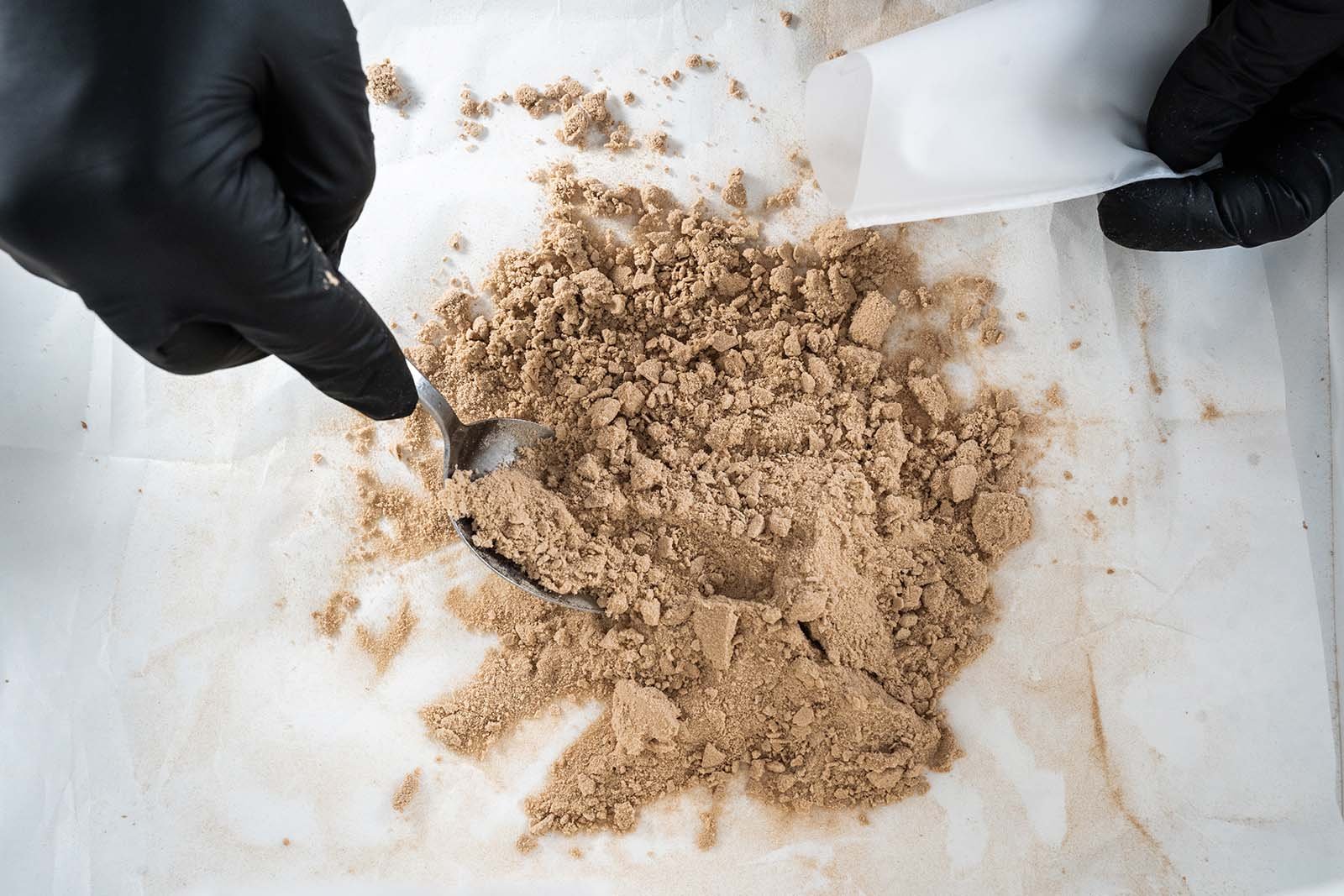Bubble hash is one of the most popular cannabis products preferred for its solvent-free, high potency, and full flavors. As a producer, you must ensure that you offer consumers the best bubble hash.
How do you do that?
Drying bubble hash the right way to ensure top quality.
Understanding how to dry bubble hash properly is essential to ensure optimal terpene preservation, mold prevention, and proper consistency. Here, we explore the multiple drying techniques, timeframes, and best practices for producing the best quality bubble hash.
Sections
ToggleHow to Dry Bubble Hash (Step-by-Step)

While the process is simple, minor details are often overlooked, ruining the product’s quality. Follow these steps to ensure the bubble hash is appropriately dried.
Step 1: Collect Wet Bubble Hash After Washing
After ice water extraction, carefully collect wet hash from the filter bags. The high moisture level in the hash must be removed to prevent degradation. Use clear parchment paper to collect the hash.
Step 2: Choose Your Drying Environment
Proper drying environment is mandatory for drying bubble hash. A temperature between 60-68°F (15-20°C) with 35-45% humidity levels is ideal for drying hash. Choose a clean, dark, and contaminant-free storage facility for drying hash.
Step 3: Break It Down for Faster Drying
Clumped hash can preserve a lot of moisture and affects how long it takes to dry bubble hash. Break down the wet hash into smaller pieces to increase surface area for faster and more even moisture evaporation.
Step 4: Monitor for 5–10 Days (Air Dry) or 24–48 Hours (Freeze Dryer)
Air drying bubble hash typically takes 5-10 days in optimal conditions but requires regular monitoring. Commercial applications can accelerate the process to just 24-48 hours. Ensure you periodically check for any signs of mold, uneven drying, or other issues during this phase.
Step 5: Confirm It’s Dry
Before further processing the bubble hash, test if it’s scorched. A sandy or powdery texture indicates properly dried hash.
Drying Methods Explained

Depending on the scale of operation, budget, and time constraints, producers can choose from several drying methods.
1. Air Drying (Cold Room)
A natural way of drying bubble hash, it is widely used.
Pros: No specialized equipment need makes this method highly cost-effective
Cons: Process is time-consuming, taking 5-10 days
Best for: Home producers and enthusiasts who want to dry bubble hash in smaller batches
2. Freeze Drying
A commercially used method, it uses specialized freezers for drying bubble hash.
Pros: A fast process (24-48 hours), it preserves maximum terpenes and cannabinoids
Cons: Requires expensive equipment ($2,000-$40,000)
Ideal for: Producing premium quality hash in large volumes
3. Microplane + Card Method
Another simple technique uses minimal equipment.
Pros: Creates optimal hash particle size for even drying
Cons: Labor-intensive process and can result in product loss during handling
Works for: Mid-size cannabis operations seeking a cost-effective alternative to freeze dryer
Preparing to Dry Your Bubble Hash

For properly drying bubble hash, there are some prerequisites:
- Ensure all tools and surfaces are thoroughly cleaned and sanitized to prevent contamination.
- Select parchment paper or drying screens that won’t stick to wet hash.
- Make arrangements to maintain stable temperature and humidity.
- Organize drying workflows to minimize handling and exposure time.
Monitoring the Drying Process
Proper monitoring is essential to maintain ideal environment conditions throughout the drying process.
- Check for potential condensation points to ensure moisture is not reintroduced.
- Monitor hash for any visual changes to evaluate drying progression without unnecessary handling.
- For consistent results, record temperature and humidity data.
- Be sure to use gentle air circulation, avoiding directly blowing on the hash.
How to Know If Your Bubble Hash Is Fully Dry
There are few standard tests to know the condition of dried has.
Snap Test – Properly dried hash breaks cleanly without bending under pressure.
Feel Test – Thoroughly dry bubble hash always has a sandy, non-sticky texture, easily crumbling between fingers.
Visual Test – Properly dried hash has a light color instead of wet hash’s matte or glossy appearance.
Common Drying Mistakes to Avoid
1. Storing While Damp: Prematurely dried hash inevitably develops mold, resulting in product loss.
2. Over handling: Excessive moving or touching hash during drying can damage trichome heads and degrade potency and flavor.
3. Too Much Heat: Rushing the bubble drying process can lead to terpene loss and oxidation. Temperature should be below 70°F (21°C) throughout the drying process.
4. Lack of Airflow: Not ensuring sufficient air circulation will create moisture pockets, extend drying time, and risk mold formation.
Post-Drying Storage Tips
After properly drying the bubble hash, storing it securely is the next step.
- Store dried bubble hash in airtight glass containers or hash-specific storage bags.
- Keep stored hash in cool, dark environments at approximately 55-60°F (12-15°C).
- Vacuum-seal is used for optimal preservation of volatile compounds and avoiding oxidation.
Conclusion
Understanding the process of drying bubble hash properly ensures the highest quality. The process requires patience, attention to detail, and controlling environmental factors. The best way to dry bubble hash depends on volume, the scale of operation, budget, time constraints, and quality objectives. Learn how long it takes to dry bubble hash without ruining the quality, as accelerating the process can negatively impact the potency and flavor of the final product.

